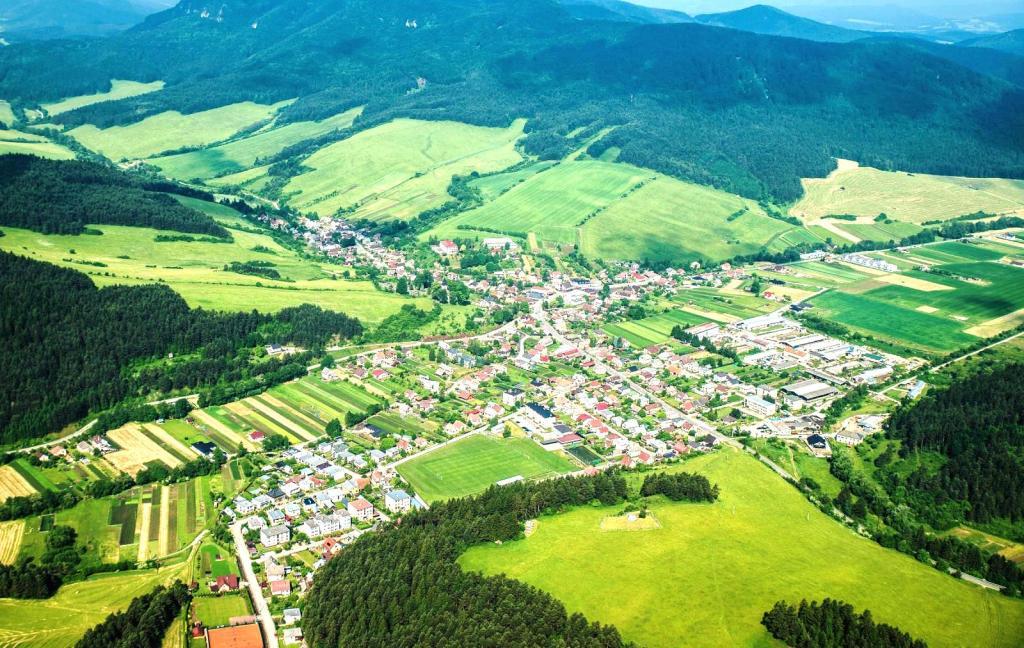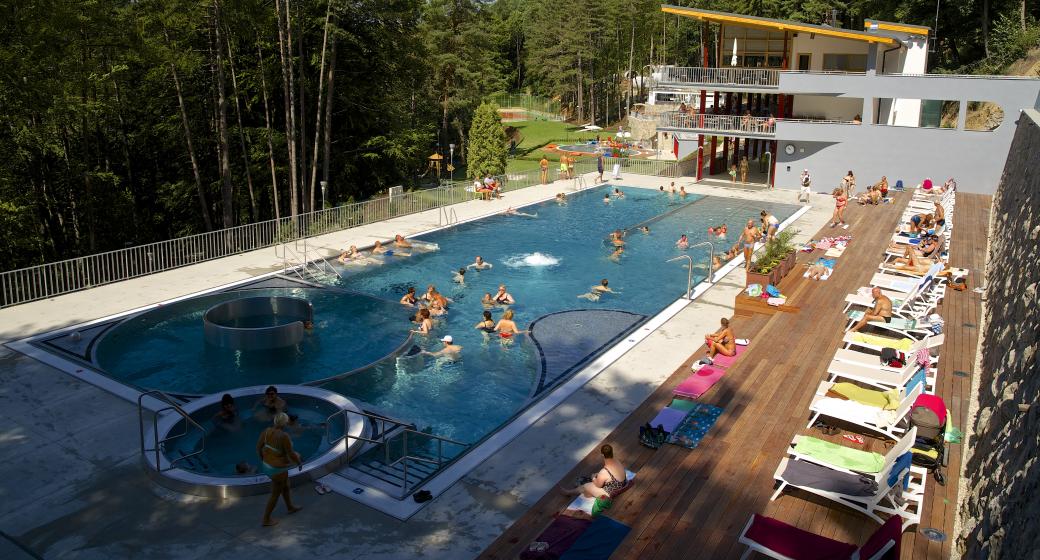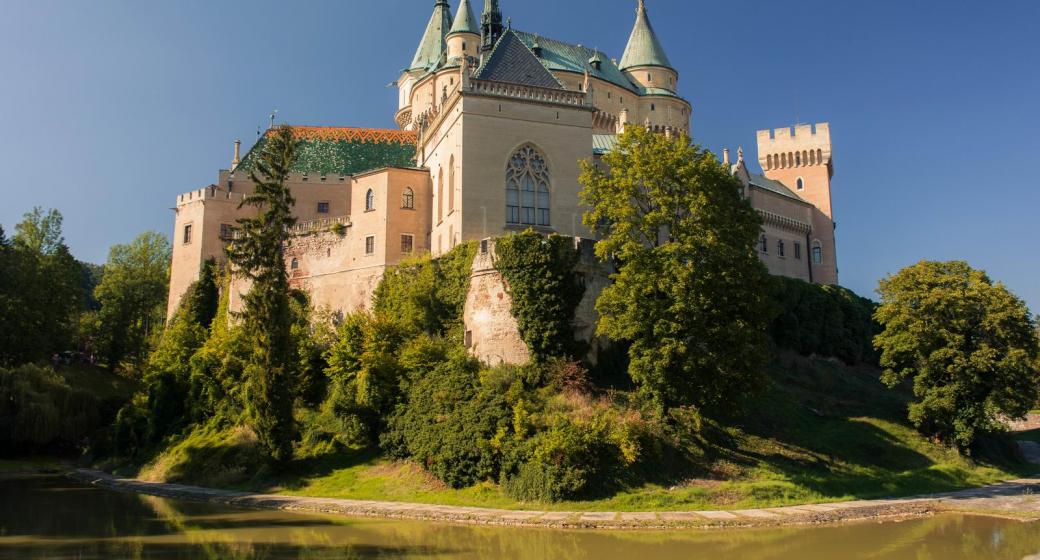


Each village has its charm. My life is accompanied by myths, stories, legends and "word toys". Domaniža is no exception. Women's languages claim that guys are easier here. They say they have a chance to miss them after the village. Domaniža is a varied road junction. And it was always there. Once upon a time, the Amber Way and later the so-called Dukate Route. But the church always held fairs where merchants offered goods from various endings. And when we are on these trips, one trader has traveled from the Balkans even today. Wide-far you will not find a better ice cream than the one from him.
Near the engineering metropolis of Považia is a picturesque and time-centered village village of Domaniža. You can best recognize local ones by nickname. The surname is only a compulsory ride in this passenger, a more strictly necessary official item in the civilian record. Just between us, the mayor of the village is currently a "guy from Jánošík", called František Matusik.
To mention Janosik this year in the village is a symbolic act. Since the birth of the Slovak national hero, the best-known fighter Juraj Jánošík, has been circulating for 330 years. And although his birth and life are mainly associated with Terch, the verdict of the trial on his execution is Domaniža's conscience in his own way.
It was a mistake
So let's go back to history. A favorite Domani parish priest, Vrtík, was on his way to his job duties-he went to confess. On one of the main mountain movements, however, he painted the bandits who belonged to the Jánošík group. They attacked him, they shot, and the sparrow, Vrtík, eventually suffered injuries. The question is whether the wrestlers have brought him to the village themselves or put him on a horse and he brought him to the village. Today's generations of Domanians will know both versions of the legend. In any case, the courts in Liptov learned of the fact that Jánošík 's party is conscious of the death of the parson. The evidence was not sufficient for his conviction. The hook ripped him with pure conscience only as a result of this event. You have certainly noticed that we have mentioned Jánošík's group, not Jánošík directly, during the tragedy of the ruler Vrtík. The reason is simple. Two years after the death penalty, it came to light that Juraj Janosik did not meet in the woods with the ruler Vrtíkom and did not attend the incident. The hook that they hung on him was "mistaken" in Domanija for error.
Will they access the coffin with the parishioner?
However, the destiny of Farr Juraj Jánošík and Vrtíka did not change that. Jánošík remained the symbol of a hero that he took rich and gave to the poor. And Farr still remained in Domanija. The body of the clergy worshiped and deposited in the back of the church. According to locals it is still preserved. The village wants to bring life and the tragic death of its favorite priest to the public and the coffin.
The beggar did not begin to praise the Domanians until his reign. For the local parishioners, the village has done a great deal. Among other things, he built the first organ here. Domaniža, a "low-rise house", was built beneath the castle, which slopped above the valley. On the rock where he once stood, today is a primary school. During its construction, bronze remains were found at the church, but the history of the settlement was not yet established. A number of finds are located in the museums in Prague and Budapest. The original village was spread over the current tourist attraction of Three Wells. From the neglected area enthusiasts have been able to build a shelter for the whole family. And as we are in Domani, we have to remember the paths again.
Door without a handle to the past
Three wells act as another junction, this time touristic. The castle lords lived here on a massive rock. No, their legs were not crawling along the trenches. A secure and convenient transfer to the church that is on the next hill is secured by a wooden bridge. Today, we might call it the estacade. We learn about this historic architecture with coffee and homemade cakes. Mrs. Maria Porubcinová, our host, offers even more - takes us to the scene. We stand at the original massive wooden door to the church. In front of us there is a view of the rock, where today is the school instead of the castle. And suddenly, our imagination will start at full speed. The stone vaults precisely determine where the mansion began. We are suddenly aware of which direction we would have built on our site. Prospects that offer strolls in tree crowns have been simply popular since centuries.
The door, and the door to the church we're standing with, does not have a crank from the outside. "Do not get the vandals into the church. It is the original element. This was how all the church doors once looked. Only the church could open them from the inside. Behind them is the baptism, "says Mrs. Maria. At the same time it will show two cultural monuments - lilac. Majestic, beautiful, though at times problematic. No matter, it's Domanique pride.
The easels were taught at school
People are proud of their natives, especially the beautiful Štefániu Dudáková, rodenú Čelková. Her handicraft today was left in the hands of children, grandparents and grandchildren. To paint or to write, as the local Easter eggs are said to have been taught by the Domanians during their lifetime. Whoever went to school in the village also went through the course of writing poems. Fathers produced a "wax applicator", a wooden stick with a tin funnel at the end. Gazdinas blew the eggs and went for it. First wax ornament and dye in color. Another ornament and other color. Another wax pattern and again another color. This procedure is repeated ten times. And when you think you have the pot done, the final is coming now. Wax layers need to be carefully removed. If the egg does not melt under stress, we congratulate. Domanique Easter is in the world.
About this method she was also taught by the granddaughter of Štefánie Dudáková during her studies at college. "I just listened. But then it did not happen to me, and I confess that the beautiful beauty we are learning about is our grandmother. And that we produce traditional waxes right now, "says Terézia Kulichová, who does not even use any other decoration technique. The more demanding the pattern, the more fun it is for the whole family. However, the application of the egg wax is not accidental. Every Domanian will tell you how the pattern is called. Lily of the valley, the great cagal, the rake, the čečka ... There is even a book about Slovak Easter eggs, where the Domanique patterns are described in detail. "Look, here under one egg, they wrote that" without a closer name ". But she has a name. Forgotten. Probably this name has been misled by the author of the book, and this picture has gotten under the picture of a teardrop pattern, "says grandson Štefánie Dudáková and enthusiastic collector of folk traditions Juraj Kulich. His mother Jurena pulls out more and more Easter eggs in her kitchen.
On the desk and on the stamp
We went to Domanija during the Fasiang, and only a few weeks left for the Great Night. Kulichovcov warm wax, color, wax, color and so around. Meanwhile, a great thing is fine. The village commemorates this year's 750th anniversary of the first written mention. And the Domani celebrations should be carried in the spirit of the beauties. We also receive a postage stamp on which is depicted a Domestic Kraslica. Therapy with grandma Jurena looks like eggs under the microscope. They found him. The velor pattern that is on the stamp is also on Kulichovcov on the table. We hold the original in the hand.
To say goodbye, this family will tell us about an interesting local tradition amongst the door. Even in May, in Domani, the Easter eggs were connected. The girl, who had grown up in the morning before the house and was planning a wedding, had to make one big and ninety-nine small charm for her dear. She was mostly not alone, her friends and relatives helped her advice.
In Domani, that's what everyone is helping. With everything and everything.
text: Radova Stoklasa, Martin Petrík
photo: archive of the municipality of Domaniža, www.domaniza.sk

. Mesto Trenčianske Teplice leží severovýchodne od Trenčína na úpätí Strážovských…

HISTÓRIA. Prvá písomná zmienka o existencii hradu je z roku 1113 v listine zoborského…